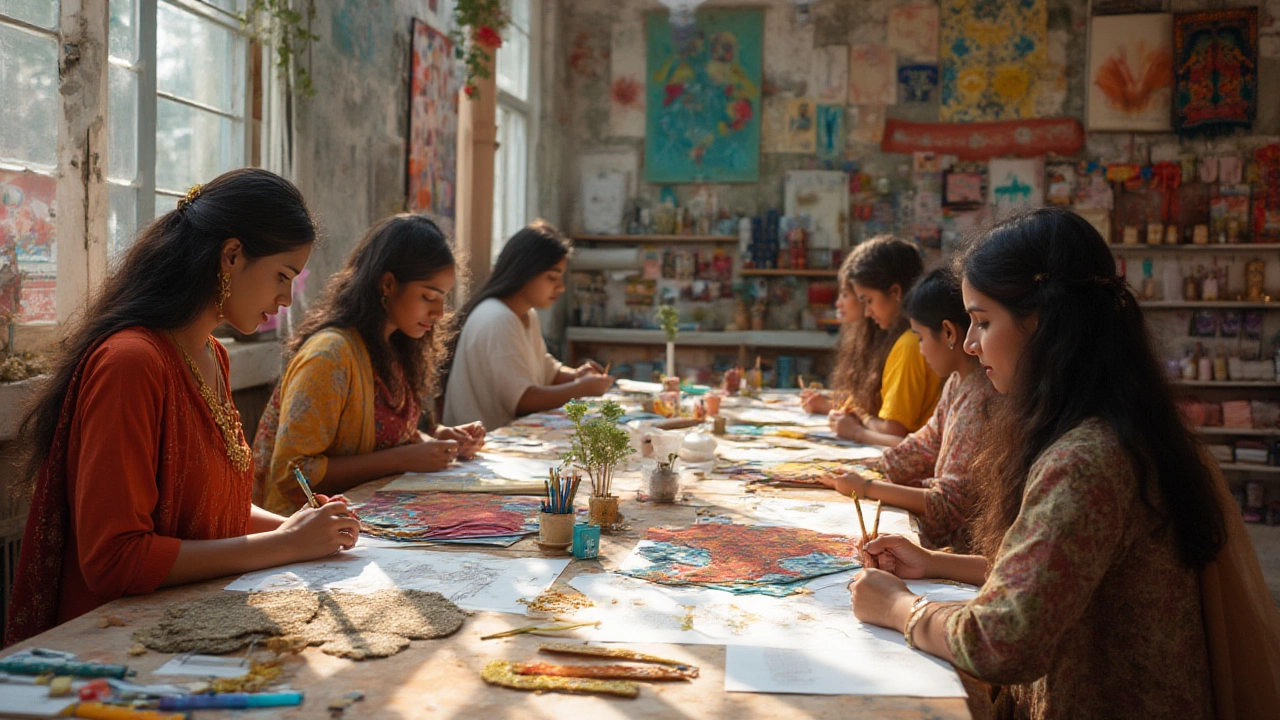Skills for Fashion Designing: Essential Abilities to Boost Your Career
When talking about Skills for Fashion Designing, the blend of creative, technical and business abilities that let you turn ideas into wearable collections. Also known as fashion design skills, it forms the backbone of every successful designer. It is closely linked to Fashion Design, a discipline that merges art, fabric science and market trends and often nurtured through Vocational Training, hands‑on programs that teach real‑world techniques in a studio or industry setting. Understanding these connections helps you choose the right learning path and start building a portfolio that speaks to employers.
The skill set breaks into three main buckets. First, creative abilities like sketching, trend forecasting and color theory let you imagine fresh looks. Second, technical know‑how—pattern making, draping, garment construction and textile knowledge—turn concepts into actual pieces. Third, business competence such as brand storytelling, pricing, supply‑chain basics and digital marketing ensures your designs reach the market. In semantic terms, Skills for fashion designing encompasses creative vision, requires technical craftsmanship, and influences portfolio development. A strong portfolio showcases sketches, technical flats and finished garments, proving you can move from idea to product.
Education Paths and Course Length Matter
Choosing how to learn these skills is a big decision. A full‑time bachelor’s degree offers deep theory, extended internships and a wider network, while a diploma or short certificate focuses on core techniques in 6‑12 months. Recent data shows diploma holders often enter the workforce faster, but degree graduates enjoy higher starting salaries in larger firms. Course duration therefore shapes both skill depth and employment timing. For example, a 3‑year fashion design degree includes a capstone collection and industry placement, whereas a 9‑month certificate might concentrate on pattern making and digital design tools. Vocational training programs, sometimes offered by technical institutes, combine classroom lessons with live projects, giving you a real‑world edge before you graduate.
Industry exposure is another critical factor. Internships, live runway projects, and collaborations with textile manufacturers provide the practical experience that employers value. Many fashion houses look for candidates who already understand production timelines, sustainable sourcing and e‑commerce platforms. By aligning your skill development with these expectations—whether through a degree, diploma or vocational course—you increase your chances of landing a role that lets you grow.
In today’s fast‑moving market, designers also need digital fluency. Mastering software like Adobe Illustrator, CLO 3D and pattern‑making apps shortens the prototype cycle and opens doors to virtual showrooms. Sustainability knowledge—knowing eco‑friendly fabrics, waste‑reduction methods and circular design—adds another layer of relevance. When you blend traditional craftsmanship with modern tech, you create a versatile profile that adapts to any fashion sector, from luxury ready‑to‑wear to fast‑fashion startups.
All these elements—creative imagination, technical precision, business insight, proper education route and digital tools—form the complete picture of what employers are hunting for. Below you’ll find a curated collection of articles that dive deeper into each of these areas, from choosing a degree versus a diploma to understanding course length, building a standout portfolio and leveraging free certification resources. Use them as a roadmap to shape your learning journey and turn your fashion design passion into a rewarding career.
Fashion Designer Qualifications: Skills and Pathways for Success
- Rohan Mittal
- on Jul 10 2025
- 0 Comments
